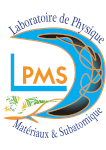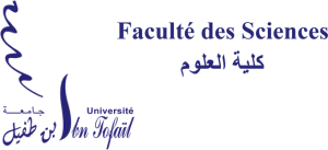Professor Bouchta SAHRAOUI
Professor Bouchta SAHRAOUI was born in Morocco. He received a M.Sc. degree in Physics with from the Nicolaus Copernicus University (Torun, Poland) in 1992 and obtained his PhD degree in Physics in 1996 from the University of Angers (France) and from the Nicolaus Copernicus University with distinction in Poland (in 1998) the highest distinction in France and Poland. His PhD thesis concerned the third order nonlinear optical properties of new TTF derivatives. Professor SAHRAOUI joined the Laboratory of Optical Properties of Materials and their Applications (POMA) at the University of Angers in 1996. Professor SAHRAOUI obtained his habilitation diploma in 2001 from Angers University and since 2003 has held the position of Professor of Physics. Since January 2010 Professor Bouchta SAHRAOUI became a member of the Institute of Sciences and Molecular Technologies of Angers (MOLTECH Anjou, UMR CNRS 6200). Professor SAHRAOUI was promoted to Professor CEx (highest recognition in France) as distinguished Professor in September 2011. Professor SAHRAOUI is co-chair since January 2014 of the associated international laboratory LIA-NAPOLI («Nano photo-switching of organic materials with lights») bringing together the University of Angers and the Wrocław polytechnic of Science and Technology (Poland). Professor SAHRAOUI is a physicist specializing in nonlinear optical (NLO) materials and effects, nanophotonics, biophotonics, molecular photonic, as well as the electrical properties of molecular materials. He has extensive experience in diagnostics and investigations of NLO effects using short pulse lasers. Prof. SAHRAOUI conducted cutting-edge research into advanced materials such as new highly conjugated compounds (organic and inorganic) including biomolecules for photonics and energy applications. His publications address nonlinear electro optic effects, second and third order susceptibilities and molecular hyperpolarisabilities of organic and inorganic compounds (solution, bulk and thin films) using nonlinear-optical techniques (real-time holography, phase conjugation), nonlinear optical effects including optical limiting properties in organic polymers (dye-doped polymers, molecules) and nanostructured and multifunctional compounds (organic/inorganic and nanocomposites). His contribution to the dynamic formation of photoinduced structuration and nanostructuration was foregrounded by the journal Nature Photonics as a research highlight (Vol. 2, 2008). Moreover Professor SAHRAOUI organized more than 25 prestigious conferences as a chair or co-chair, for example AMPSECA 2017, ICNP 2018 and ICFPAM 2019, as well as two conferences with more than 500 participants (ICFPAM 2015, ICTON 2019) and the participation of prestigious and brilliant scientists including Nobel Price laureates. Prof. SAHRAOUI has published more than 400 peer-reviewed journal articles, he has more than 6900 citations (according to ISI Web of science) and his Hirsch-index is currently 51 (cf. Web of Science). Professor SAHRAOUI is member of the editorial boards of five indexed and prestigious journals. He is a guest editor of 12 special issues on energy and photonics applications. He has presented more than 50 invited and plenary lectures. Professor SAHRAOUI serves as a reviewer for more than 40 peer-reviewed journals. He has conducted or is involved in 7 European collaborative projects, 2 international grants fostering collaborations with Morocco, USA, Japan, Poland, Germany, Italy, Romania, Bulgaria, Ukraine, Lithuania, Czech, Ivory Coast, Burkina Faso, Tunisia, Turkey and Malaysia. He managed 3 national grants and coordinated 6 bilateral research contracts. He has supervised 35 MSc students, 21 PhD candidates and 14 postdoctoral researchers. The French Ministry of Higher Education, Research and Innovation awarded Professor SAHRAOUI five times its price for excellent research. Recently the prestigious US University of Stanford ranked the distinguished Professor SAHRAOUI among the top 2% of the most cited scientists internationally and among the top 2% of scientist’s personalities who had the greatest impact on the scientific community in 2019. The Stanford classification is based on data from Scopus and Web of science.







